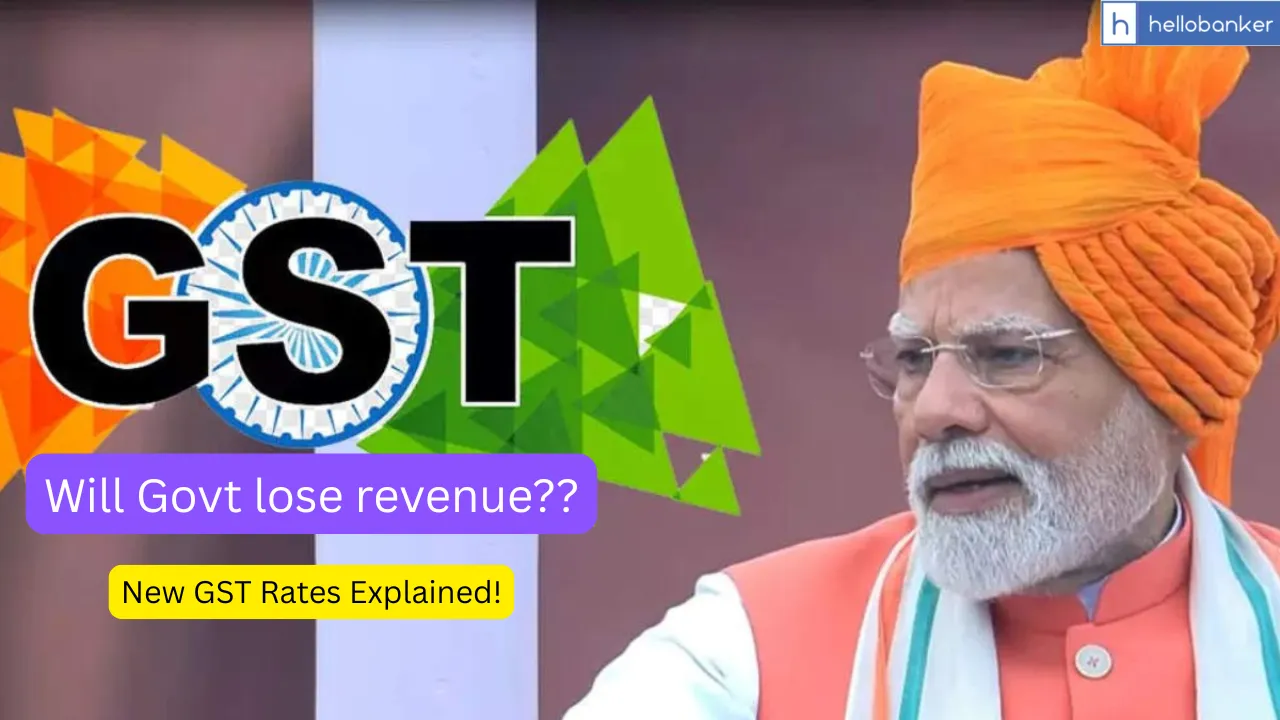| ➡️ Get instant news updates on Whatsapp. Click here to join our Whatsapp Group. |
In its 56th meeting, the GST Council decided to simplify the tax system. Until now, GST had a four-slab structure with different tax rates like 5%, 12%, 18%, and 28%. This has now been simplified into just two main rates:
- Standard Rate: 18%
- Merit Rate: 5%
Additionally, a special higher rate of 40% will apply to a few goods and services considered harmful or luxury items.
When GST was first introduced in 2017, the average tax rate was about 14.4%. After earlier adjustments, it fell to 11.6% in 2019. With this latest rationalisation, experts believe the average rate could drop further to around 9.5%. This means that overall, consumers may have to pay less tax on many everyday goods and services, making them more affordable.
Out of 453 items whose GST rates were reviewed, 413 goods saw a tax cut while only 40 became costlier. Nearly 295 essential items which earlier attracted 12% GST are now reduced to just 5% or even NIL (zero tax). This could include several food items and basic household products, directly benefitting common people.
Will Government Revenue Reduce?
The government expects that, due to these cuts, it might lose around ₹48,000 crore annually in tax collections. However, because lower taxes can encourage people to buy more, the actual revenue loss may be only about ₹3,700 crore, which won’t hurt the government’s fiscal health much. This is ~1
bps impact on Fiscal Deficit.
However, in the past episodes, rate cut has translated into additional revenues of nearly ₹1 trillion. GST rationalisation (reducing the number of tax slabs and simplifying rates) should not be looked at as just a temporary boost for demand, where people buy more because taxes are lower. Instead, it should be seen as a long-term structural reform.
By making the tax system simpler, businesses will find it easier to follow rules and pay their taxes. When compliance is easier, more people and companies are willing to pay taxes honestly, which increases voluntary compliance. This, in turn, widens the tax base — meaning more taxpayers contribute to government revenue.
Impact on Inflation (Price Rise)
Since the GST on essential items has been reduced, consumer inflation (CPI) is also expected to come down. Prices of essential goods may fall enough to bring inflation down by 25–30 basis points in FY26. Services will also get cheaper, reducing inflation further by 40–45 basis points. Overall, inflation could ease by 65–75 basis points over the next two years.
The GST Council has reduced the tax rate on about 295 essential items from 12% to either 5% or zero. Because of this, the prices of these essentials — many of which are food items — are expected to fall. When essential goods become cheaper, it lowers inflation in that category. Economists estimate that this will bring down consumer inflation by 25–30 basis points (0.25%–0.30%) in FY26, assuming that at least 60% of the tax cut is passed on to consumers by sellers.
In addition, GST rates on various services have also been reduced. Cheaper services mean people will spend less on things like banking, insurance, or other daily-use services. This is expected to reduce overall inflation by another 40–45 basis points (0.40%–0.45%), assuming half of the tax benefit is passed on to consumers.
When both effects are combined, experts believe that overall consumer inflation (CPI) could fall by about 65–75 basis points (0.65%–0.75%) over FY26 and FY27.
Cutting GST on essentials and services will likely make everyday goods and services cheaper, and as a result, overall inflation in the economy will come down noticeably in the next two years.
Impact on Banks and Insurance
For banks, many services will now attract lower GST. This will reduce costs for banks, helping them operate more efficiently. For insurance, there is very good news. GST on health and life insurance premiums has been cut to zero. This will make policies more affordable, encouraging existing policyholders to increase coverage and motivating new buyers to take health or term insurance.
Currently, different types of insurance products are taxed at different GST rates. For example, on life insurance products, the first-year premium is taxed at 4.5%, the renewal premium at 2.5%, and single premiums on savings-linked products at 1.8%. Protection products (like term insurance) and fund management charges in ULIPs (Unit Linked Insurance Plans) attract 18% GST. Because of this, insurance premiums become more expensive for households.
In FY24, the government collected a total of ₹16,398 crore from GST on health and life insurance. This included ₹8,263 crore from health insurance and ₹8,135 crore from life insurance. On top of that, reinsurance — which is insurance for insurance companies — also contributed ₹2,045 crore (₹1,484 crore from life and ₹561 crore from health insurance).
By removing GST completely, premiums will become cheaper. This has two expected benefits. First, existing policyholders may choose to increase their coverage (sum assured) because their overall cost is now lower. Second, the affordability will likely attract new customers, encouraging more people to buy health and term insurance.
According to experts, one major reason why the government removed GST on insurance is that it wants to provide insurance coverage to every Indian.
What About Tobacco and Alcohol?
Tobacco products earlier attracted 28% GST plus a very high cess (ranging from 11% to 290%). This cess will continue until the loans taken during the GST compensation period are repaid, which is expected by April 2026. Alcohol is not under GST, so states can still impose their own excise duty without the GST Council’s approval.
